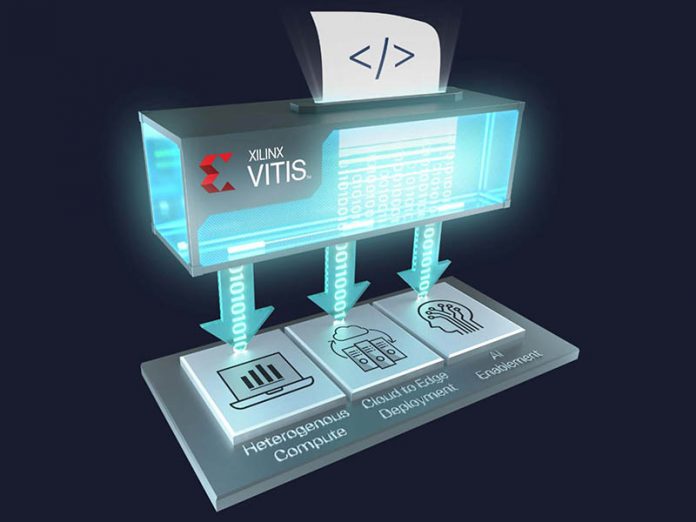Vitis is a technology Xilinx says is five years in the making. At XDF19 Xilinx Vitis was the star of the keynote. Xilinx recognizes that it has a compelling product line that requires more work than the average GPU or accelerator to utilize. With Vitis, the company is introducing a software toolset designed to make FPGAs accessible for masses of software developers. Xilinx hopes it will open the door to more software and AI developers.
Xilinx Vitis Platform Launched
Xilinx Vitis is the company’s vision of a unified software platform. We heard this being called “Xilinx’s CUDA.” It will be available in early November, and is, free. There is no encrypted binary. Instead, it is free. In the FPGA world, vendors typically charge a lot of their software tools. Moving to this model, the company hopes to compete directly with established competitors.
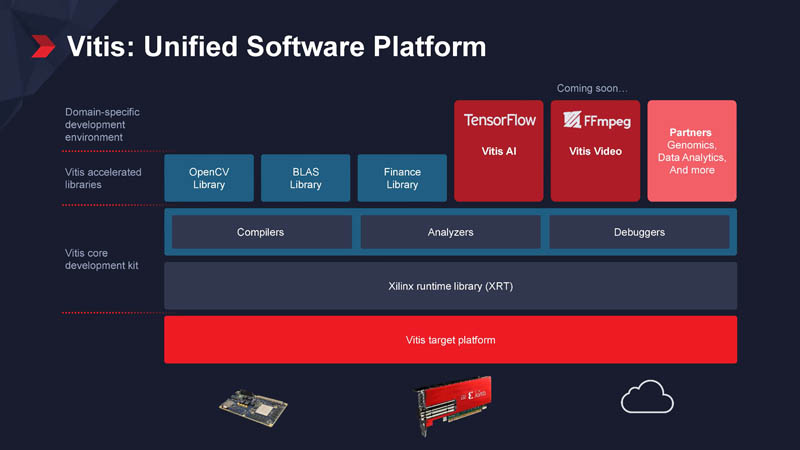
One of the critical points that Xilinx made in the pre-briefing is that the Vitis is taking elements from five previous development environments and moved them into one. Xilinx has been working on abstraction for years, but this is a next-step to unify a number of the different tools that different developers in its ecosystem currently use.
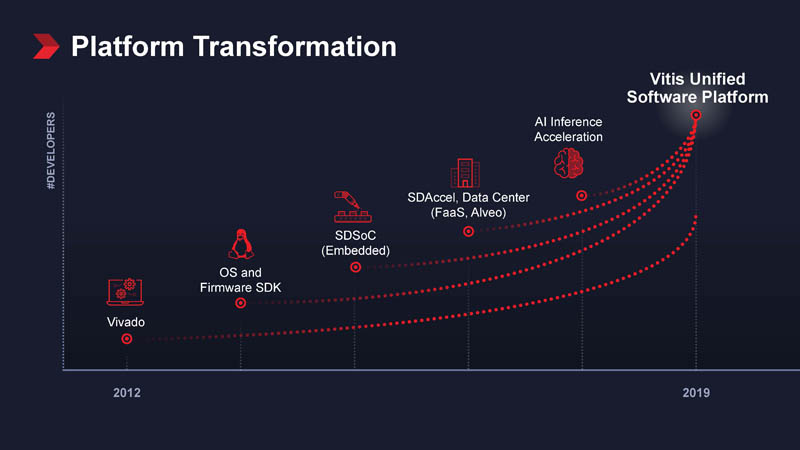
To illustrate the benefit of FPGAs in the hands of software developers, the company used deep learning as an example. Xilinx contends that there is a new state-of-the-art deep learning model every quarter. The company says that a critical issue with this pace of change and using GPUs. To be clear, that is a very self-serving view since Xilinx does not sell GPUs.
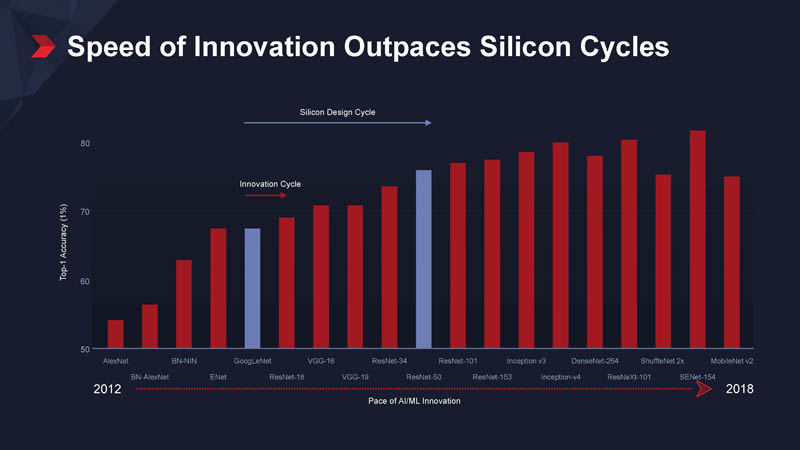
Xilinx contends that accelerators that performed well on older models tend to lag state-of-the-art software because it takes so long to incorporate new acceleration pipelines and features into silicon. Using FPGAs, one can re-program accelerators for new state-of-the-art models.
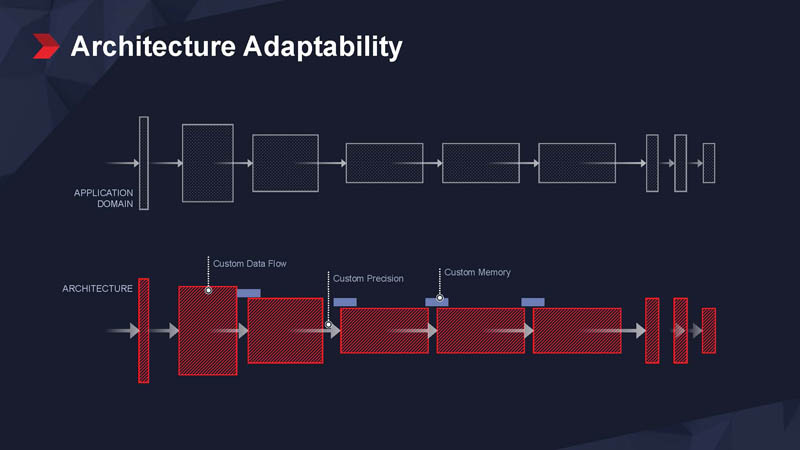
Xilinx says 2024 autonomous automobiles in design today have Xilinx accelerators inside because they are adaptable. Feeding this developer demand, Vitis is designed to give libraries to those who are doing the next-generation of work. Vitis is designed to work directly with common frameworks like TensorFlow, Caffe, and PyTorch.
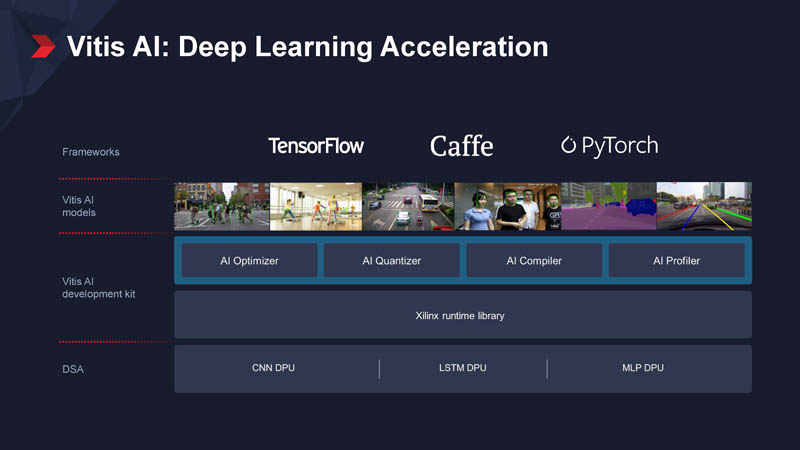
Developers will be able to work in TensorFlow, for example, and have their FPGAs place logic and accelerate workloads without having to touch the hardware.
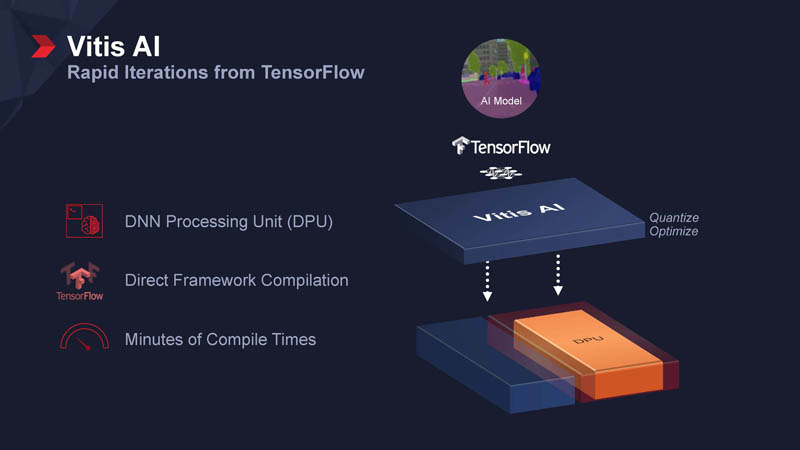
To be clear, Xilinx is not abandoning its current Vivado tools. For those who know how to leverage the powerful toolset, it still supports that channel.
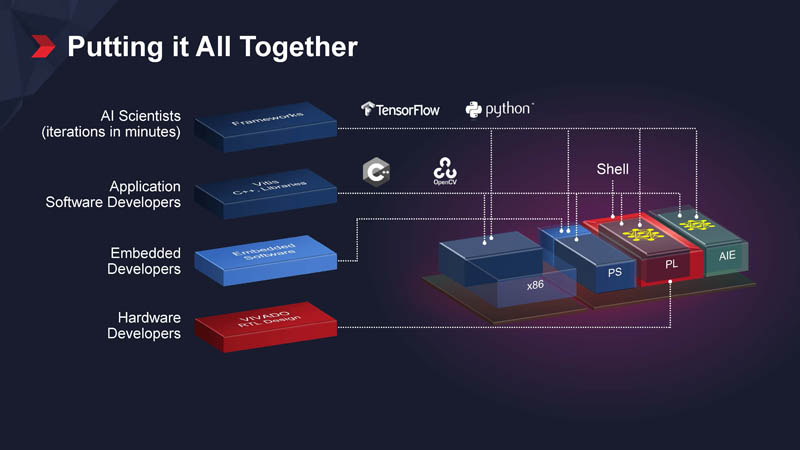
Vitis provides the shell for the FPGA that ensures that developers do not need to handle low-level drivers, place logic, and provision memory. Instead, developers can program in their environments and use open source libraries to accelerate workloads using Xilinx FPGAs.
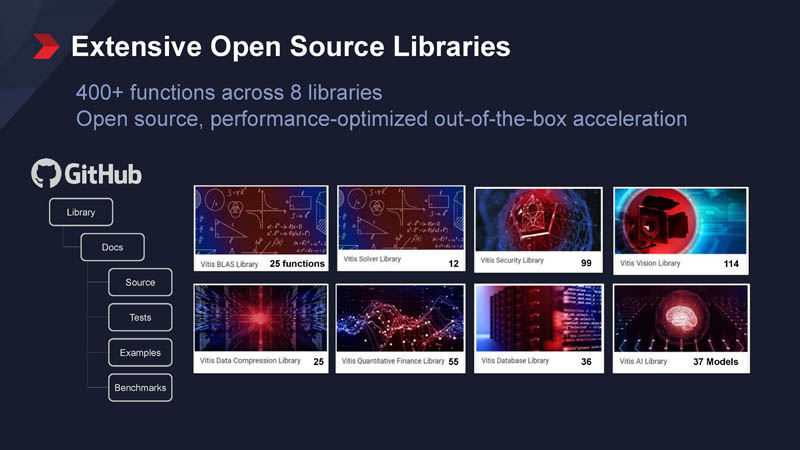
Xilinx is committing to open source and continuing to publish libraries, source code, examples, and documentation for Vitis. It is also trying to emulate what NVIDIA and others do with their developer ecosystems by launching developer.xilinx.com.
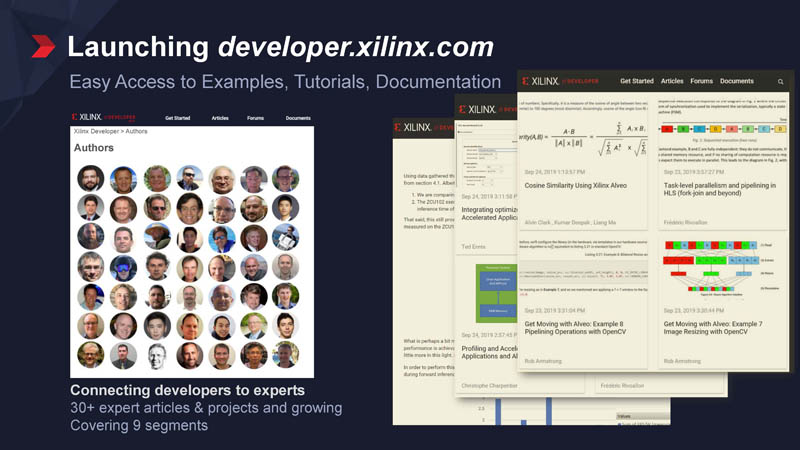
Xilinx is also focused on a few new initiatives to make it easier to get on FPGAs. It is promising to get developer boards out with its modern FPGAs faster. That includes showing a new ACAP Versal developer board today at the XDF19 Keynote. The company says its new Alveo PCIe card business aids the speed of developer board delivery. It also includes making Xilinx FPGAs in the cloud, including AWS. Xilinx is doing something that AMD mostly missed on which is containerizing services so applications can be deployed via Kubernetes on nodes with FPGAs in the cloud or other locations.
Final Words
Xilinx gets it or is at least indicating that they do. Hardware development cycles are what they are. Traditionally the same programmability that made an FPGA flexible also made it difficult to program and therefore use. Hitting a more substantial market means that Xilinx needs to make its FPGAs easy to use. This is not just easier to program but genuinely easy to use in existing developer workflows where the developer may not care about the underlying hardware. Xilinx is going open source, and free (for Xilinx boards), and is launching a developer site. These are all steps in the right direction.

